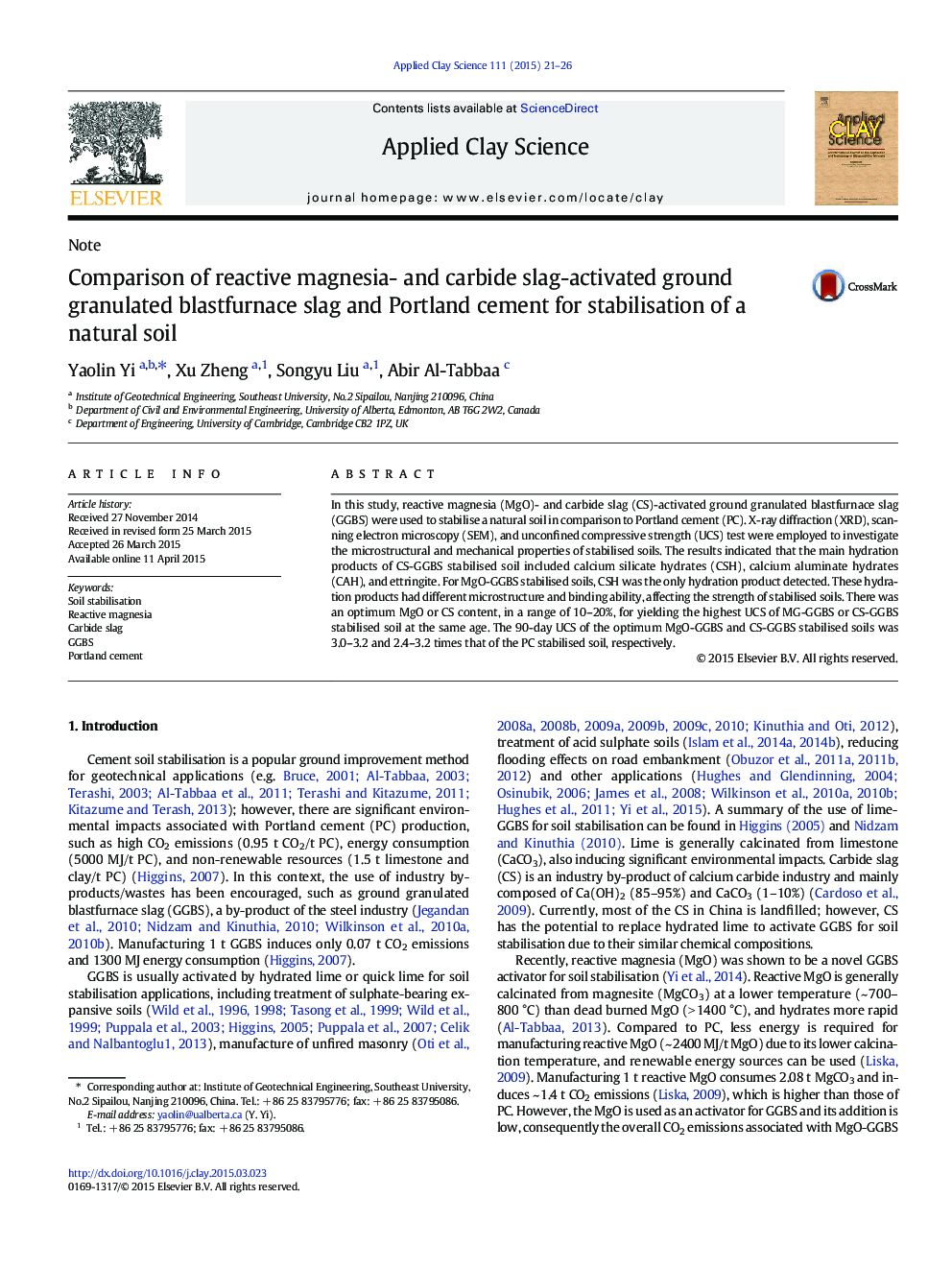| کد مقاله | کد نشریه | سال انتشار | مقاله انگلیسی | نسخه تمام متن |
|---|---|---|---|---|
| 1694451 | 1519069 | 2015 | 6 صفحه PDF | دانلود رایگان |
• Reactive magnesia (MgO)-activated GGBS is used for soil stabilisation.
• Carbide slag (CS)-activated GGBS is used for soil stabilisation.
• Optimum activator/GGBS ratio ranges from 0.1–0.2.
• Optimum MgO-GGBS and CS-GGBS are superior to Portland cement.
• CS has more economical and environmental benefits than MgO.
In this study, reactive magnesia (MgO)- and carbide slag (CS)-activated ground granulated blastfurnace slag (GGBS) were used to stabilise a natural soil in comparison to Portland cement (PC). X-ray diffraction (XRD), scanning electron microscopy (SEM), and unconfined compressive strength (UCS) test were employed to investigate the microstructural and mechanical properties of stabilised soils. The results indicated that the main hydration products of CS-GGBS stabilised soil included calcium silicate hydrates (CSH), calcium aluminate hydrates (CAH), and ettringite. For MgO-GGBS stabilised soils, CSH was the only hydration product detected. These hydration products had different microstructure and binding ability, affecting the strength of stabilised soils. There was an optimum MgO or CS content, in a range of 10–20%, for yielding the highest UCS of MG-GGBS or CS-GGBS stabilised soil at the same age. The 90-day UCS of the optimum MgO-GGBS and CS-GGBS stabilised soils was 3.0–3.2 and 2.4–3.2 times that of the PC stabilised soil, respectively.
Journal: Applied Clay Science - Volume 111, July 2015, Pages 21–26
